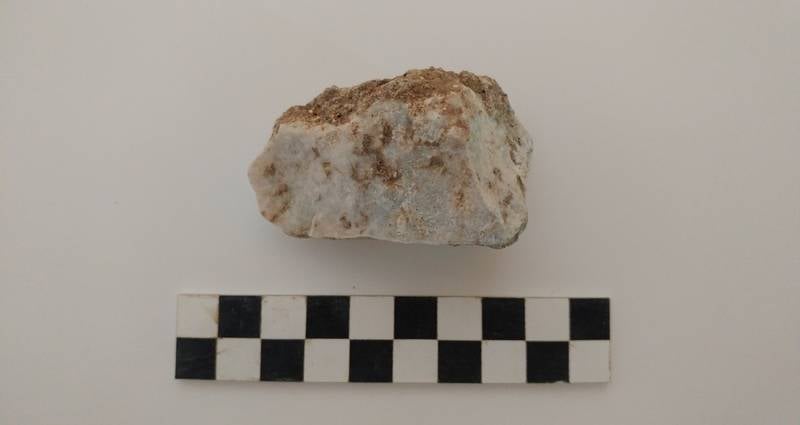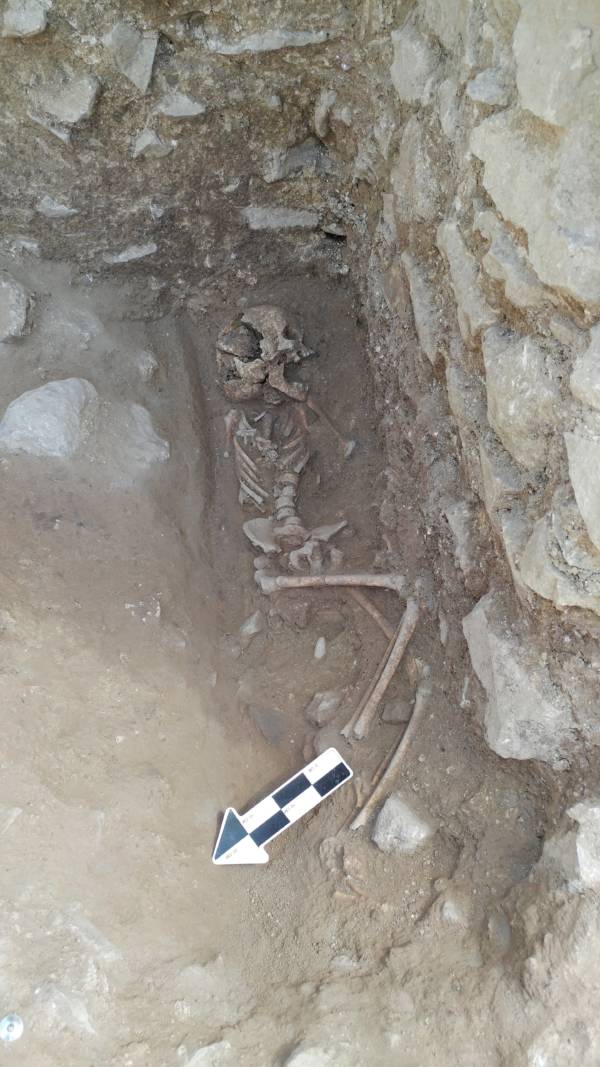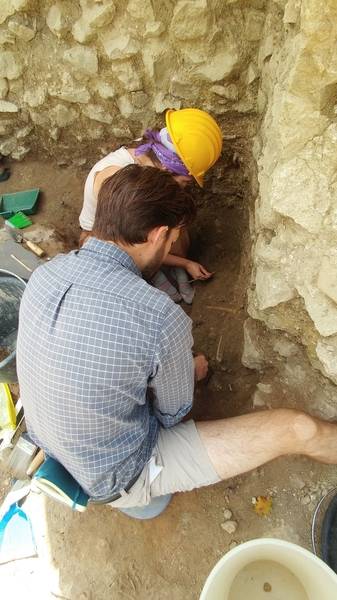Ancient Romans feared that "evils" would haunt them from the grave — and took drastic measures to keep that from happening.
Archaeologists have uncovered a “vampire burial” at an ancient Roman cemetery in Italy.
The ten-year-old child’s skeletal remains were found with a rock placed in his or her mouth and the researchers believe that it was purposefully inserted there to stop the child from rising from the dead and infecting the living with malaria, a news release said.

David Pickel/Stanford UniversityThe rock that was inserted into the child’s mouth in the “vampire burial.”
A team of archaeologists from the University of Arizona and Stanford University, as well as some from Italy, found the child’s remains at the La Necropoli dei Bambini, or the Cemetery of the Babies, in the commune of Lugnano in Teverina in the Italian region of Umbria.
“I’ve never seen anything like it,” David Soren, an archaeologist who oversaw the excavation and a professor at the University of Arizona, said in the news release. “It’s extremely eerie and weird. Locally, they’re calling it the ‘Vampire of Lugnano.'”

David Pickel/Stanford UniversityThe ten-year-old child lying on its side in a fifth-century Italian cemetery.
The cemetery where the child was found dates back to the mid-fifth century during a time when a deadly malaria outbreak ravaged many of the area’s infants and children. A “vampire burial” such as the one done to the ten-year-old child is unusual but not uncommon and was used by the ancient Romans as a precaution against the children who were killed by “evil” such as malaria.
“We know that the Romans were very much concerned with this and would even go to the extent of employing witchcraft to keep the evil – whatever is contaminating the body – from coming out,” Soren said.
The term “vampire burial” comes from the belief that the dead could rise again and wreak havoc on the living they left behind.
“This is a very unusual mortuary treatment that you see in various forms in different cultures, especially in the Roman world, that could indicate there was a fear that this person might come back from the dead and try to spread disease to the living,” Jordan Wilson, a doctoral student at the University of Arizona, said.

David Pickel/Stanford UniversityPart of the team of archaeologists recovering the ancient remains.
The ten-year-old was one of five other burials found in the cemetery last summer and is not the first body archaeologists have found in the area to have received a suspicious burial. A three-year-old was discovered previously with stones weighing down her hands and feet, which according to the news release, was a practice used by different cultures to keep the dead in their graves.
Also, during previous excavations at the cemetery objects commonly associated with witchcraft like raven talons, toad bones, and the remains of sacrificed puppies, have been found amongst the infant and toddler remains.
The archaeologists believe that the main evil that the ancient Romans were trying to keep buried at the cemetery in Lugnano was malaria. Many of the bones previously excavated have been tested and were confirmed to have been infected with malaria.
The ten-year-old child’s bones haven’t had DNA analysis conducted on them to confirm the disease yet, but researchers are confident that malaria was the cause of his “vampire burial” as well because the child was found with an abscessed tooth, which is a common side effect of the disease.
“Vampire burials” have a history outside of the Cemetery of the Babies as well. According to the news release, a 16th-century woman in Venice had a similar burial and is known as the “Vampire of Venice.” Also, in 2017, an adult male from the third or fourth century was discovered in England buried face down with his tongue cut out and replaced with a stone.
When you look at other “vampire burials” throughout history the use of stones seems pretty tame. Other examples include bodies being staked through the heart or dismembered before being buried.
Next, read about Peter Kürten, the sadistic vampire of Düsseldorf. Then check out these two male victims of Black Death who were found holding hands in a shared grave.




